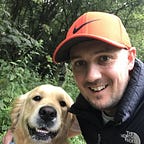Using Student Work to Improve All Students
In Teach Like A Champion 3.0. Doug Lemov shares insights from Denarius Frazier’s classroom. During this scene, Denarius is circulating purposefully while the students complete some independent work. During this circulation Denarius notices a common error which prompts home to reteach by studying the error. He calmly takes a pupils paper and makes it visible to the class using a visualiser. Then through turn and talk and cold call they recognise the error, fix the error and get back to work. It is one of the best two minutes from a classroom I have seen on video and it prompted me to trial what Lemov terms ‘Show Call’ myself.
Show Call
Show Call is simply choosing a students piece of work and sharing it visually with the rest of the class. I have began using it more and more in my lessons because, as Lemov writes, the quickest and most productive way to respond to an error in the midst of teaching is to study the error itself. For me, there is no better way to do this than using the students work and having the class do the cognitive work of fixing the error. However, it has, and is, taking a while to get the culture right.
The take and reveal
The first few times I used student work to place under the visualiser I chose work that was all the way complete. This was for a few reasons, firstly being that the students were more comfortable with me sharing their work and it was much easier to have the initial conversation where I would ask if I could show their work. Slowly, but surely, I am moving towards being able to take their book or paper as a natural occurrence in my class, but I am aware that this is taking time to build a culture of error and trust. In the past few lessons I have been able to take almost there of half way there work, which makes the show call a much more rigorous process.
Using student work to improve all students
Once the work is up on the screen I made sure that the class knew we were going to identify an error and work together to help our peer improve their work. I also made clear that if they had made the same error they would have time to fix it before moving on.
First, I give students a minute or so to look at the work silently. This gives them time to process what they see, compare it to their own work and notes and formulate an idea. After this first minute I give 30 to 60 seconds to discuss with a peer what they think is missing or needs fixed with the work. What has fascinated me here is how quickly the student whose work is on the board is to identify the error they made and form a solution to amend it.
After the discussion I bring the students attention back to me, I usually do this by saying ‘eyes on me in 3,2,1’. I must note here that I try my best to circulate during the discussion to hunt for a good response and plan who I will cold call first, the opposite of this is going fishing and hoping for a good response. Once I have their attention I cold call a student to kick start a discussion, after they give their input I call on another student to either agree or disagree with their peer who spoke first. I bounce to another two or three students until we come to a consensus. Once we have this I will note on the board what we discussed or write over the work being broadcast noting where the error has been made and how to fix it.
At this point I give the students a few minutes to check their work and make any amendments necessary and give the student back their work from under the visualiser so that they can fix their error.
I like this approach because it ensures the cognitive work of the lesson remains firmly with the students, everyone benefits because the students work being shown isn’t the only book where I seen the error because I have only done this when there is a common error amongst the students.
Next steps
I would like to do this a little more and perhaps plan for this, where appropriate. The most important part for me is building the culture of error where we can really study each others work and I fully recognise that this takes time to get right and the trusting relationships to develop. I'm a big fan of having students think or write before embarking on a turn and talk as it gives them something to say and also allows them to change what they think and do afterwards as a result, perhaps this is what Dylan Wiliam means when he mentions activating students as resources for one another.
Do you use a Show Call like this or an equivalent in your classroom?
